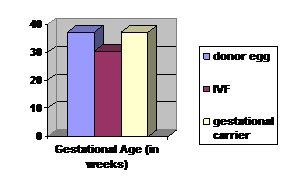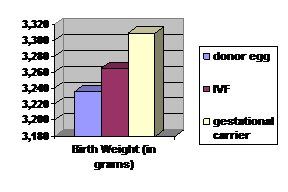Uterine Environment, More Than Egg Quality, Influences Obstetrical Outcomes
Is there a way to predict which patients will have the best outcomes following an assisted reproductive intervention? Dr William Gibbons, director of the Family Fertility Program at Texas Children’s Hospital and professor of obstetrics and gynecology at Baylor College of Medicine, and colleagues examined birth weight and gestational age of singleton pregnancies from in vitro fertilization, donor egg, and gestational carrier cycles to determine which factors most influence outcomes.
Is there a way to predict which patients will have the best outcomes following an assisted reproductive intervention? Dr William Gibbons, director of the Family Fertility Program at Texas Children’s Hospital and professor of obstetrics and gynecology at Baylor College of Medicine, and colleagues examined birth weight and gestational age of singleton pregnancies from in vitro fertilization, donor egg, and gestational carrier cycles to determine which factors most influence outcomes.
Using the Society for Assisted Reproductive Technologies online database, the researchers examined more than 300,000 IVF cycles; these cycles yielded more than 70,000 singleton pregnancies. The researchers analyzed birth weight and gestational age data to evaluate the effects of the egg, uterus, sperm, and the primary reason given for treatment.
Gibbons and colleagues found lower birth weight and gestational age in donor egg cycles as compared to that in IVF and gestational carrier cycles (Figure). While sperm source had no effect on birth weight or gestational age, female infertility diagnoses were associated with reductions in both weight and age.
Figure. Gestational age and birth weight of singleton pregnancies from in vitro fertilization, donor egg, and gestational carrier cycles.


“This is the first time that a study demonstrated that the health of a women’s uterus is a key determinant for a fetus to obtain normal birth weight and normal length of gestation,” noted Gibbons. “While obvious issues of uterine fibroids or conditions that alter the shape of the uterus are suspected to affect pregnancy rates, conditions that result in poorer ovarian function to the point of needing donor eggs are not known. Further research is needed to fully understand this complex issue.”
Meanwhile, this research can assist clinicians as they guide their patients through the infertility treatment process. “[Our] finding may help women seeking pregnancy and their physicians to consider frozen embryo transfer as a possible option if the uterine health is not a consideration,” added Gibbons.
More Information
Family Fertility Program at Texas Children’s HospitalSociety for Assisted Reproductive Technology
Related Content
References
- Gibbons WE, Cedars M, Ness RB. Toward understanding obstetrical outcome in advanced assisted reproduction: varying sperm, oocyte, and uterine source and diagnosis. Fertil Steril. Dec 2, 2010. [Epub ahead of print].
- Uterine assisted reproductive technologies: uterine health more important than egg quality, study shows. ScienceDaily. Feb. 3, 2011.
S1E4: Dr. Kristina Adams-Waldorf: Pandemics, pathogens and perseverance
July 16th 2020This episode of Pap Talk by Contemporary OB/GYN features an interview with Dr. Kristina Adams-Waldorf, Professor in the Department of Obstetrics and Gynecology and Adjunct Professor in Global Health at the University of Washington (UW) School of Medicine in Seattle.
Listen
